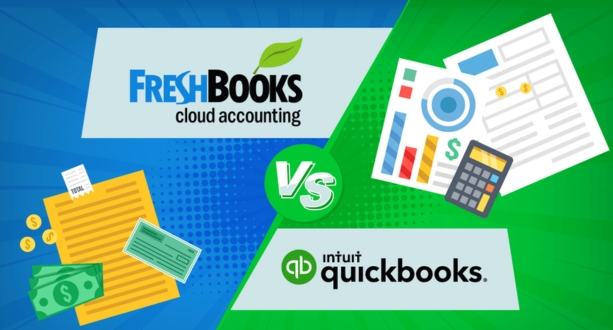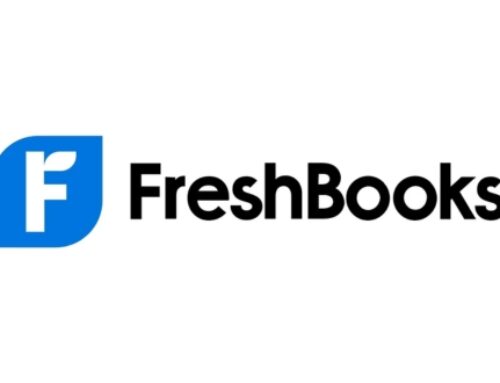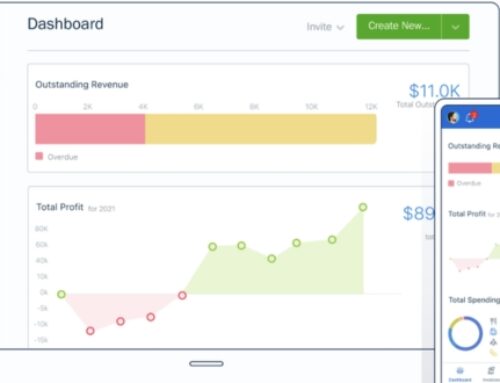Understanding FreshBooks and QuickBooks:
FreshBooks Overview:
History and Evolution of FreshBooks:
FreshBooks, founded in 2003 by Mike McDerment, has evolved from a simple invoicing software to a comprehensive accounting solution for small and medium-sized enterprises (SMEs). Initially designed to meet the invoicing needs of freelancers and small businesses, FreshBooks has continuously adapted to the changing landscape of accounting technology. Over the years, it has become a cloud-based platform with a user-friendly interface, offering a range of features beyond invoicing to streamline financial management for businesses.
Key Features that Make FreshBooks Popular among SMEs:
FreshBooks’ popularity among SMEs stems from its user-centric features that address the specific needs of small businesses. One standout feature is its intuitive invoicing system, allowing users to create professional-looking invoices with ease. Moreover, FreshBooks offers time tracking, expense management, and robust reporting tools, empowering businesses to efficiently manage their finances. Automation features, such as recurring invoices and automated payment reminders, further simplify tasks, saving valuable time for users.
The platform’s scalability is another asset, accommodating the growth of businesses without compromising user experience. Additionally, FreshBooks integrates seamlessly with various third-party apps and services, enhancing its functionality and adaptability to diverse business requirements. This adaptability positions FreshBooks as a versatile tool capable of catering to the financial needs of different industries, making it a popular choice among SMEs seeking a comprehensive yet user-friendly accounting solution.
User Interface and Ease of Use:
FreshBooks is celebrated for its user-friendly interface, making accounting tasks accessible to individuals with varying levels of financial expertise. The platform employs a clean and intuitive design, guiding users through its features effortlessly. The dashboard provides a snapshot of essential financial information, ensuring users can quickly grasp their business’s financial health at a glance.
Navigating through FreshBooks is a straightforward process, with menus and options logically organized. The platform’s design minimizes the learning curve, allowing users to adapt swiftly and focus on managing their finances effectively. This emphasis on usability not only attracts small businesses with limited accounting knowledge but also appeals to more experienced users seeking an efficient and streamlined accounting experience. Overall, FreshBooks’ commitment to a user-friendly interface contributes significantly to its widespread adoption among SMEs.
QuickBooks Overview:
Historical Perspective and Evolution:
QuickBooks, developed by Intuit, has a rich historical perspective that dates back to its initial release in 1983. Originally designed for individual financial management, QuickBooks has undergone significant evolution over the years. It transitioned from basic accounting software to a robust and versatile tool that caters to the complex financial needs of businesses. The software’s evolution mirrors the changing landscape of technology and the growing demands of businesses for more sophisticated financial management solutions.
Comprehensive Features for Diverse Business Needs:
One of QuickBooks’ standout features is its comprehensive suite of tools and features that address the diverse needs of businesses, from small startups to established enterprises. The software offers modules for core accounting functions such as invoicing, expense tracking, and financial reporting. Additionally, it provides specialized tools for inventory management, payroll processing, and tax preparation. QuickBooks’ adaptability and scalability make it a valuable asset for businesses of all sizes and industries, allowing them to tailor the software to their specific requirements.
Revolutionizing Accounting for SMEs:
QuickBooks has played a pivotal role in revolutionizing accounting practices for Small and Medium-sized Enterprises (SMEs). Traditionally, SMEs faced challenges in accessing and affording advanced accounting solutions. QuickBooks changed this landscape by providing an affordable yet powerful platform that empowers businesses to streamline their financial processes. Its user-friendly interface and intuitive design make it accessible to users with varying levels of accounting expertise. This democratization of accounting technology has empowered SMEs to manage their finances more efficiently, fostering growth and sustainability in the competitive business environment.
QuickBooks stands as a testament to the evolution of accounting software, growing from a simple tool to a sophisticated platform that meets the diverse needs of businesses. Its historical journey reflects the ever-changing dynamics of the business landscape, while its comprehensive features and role in revolutionizing accounting practices for SMEs make it a cornerstone in modern financial management.
The Need for Integration:

In the contemporary business landscape, the need for integration has become paramount, driven by the evolving complexities and challenges faced by organizations. One of the major hurdles is the existence of data silos, where crucial information is compartmentalized in different systems or departments, hindering a cohesive understanding of the overall business operations. Integration aims to break down these silos and facilitate a seamless flow of data across various facets of the organization.
Challenges Faced by Businesses:
Data Silos and the Need for Seamless Data Flow:
Businesses often accumulate data in disparate systems, leading to the creation of data silos. This fragmentation impedes the ability to have a comprehensive view of the organization’s performance. Integration addresses this challenge by establishing connections between systems, enabling a smooth and cohesive flow of data across departments.
Time-Consuming Manual Data Entry and the Risk of Errors:
Manual data entry is not only time-consuming but also prone to errors. When data is entered manually into different systems, the likelihood of inconsistencies and inaccuracies increases. Integration automates this process, reducing the reliance on manual input and mitigating the associated risks.
Difficulty in Reconciling Financial Information Across Platforms:
Reconciling financial information across multiple platforms can be a daunting task. Inconsistent data formats and disparate data sources make it challenging to ensure accuracy in financial reporting. Integration systems are designed to harmonize financial data, providing a unified and accurate view that facilitates better decision-making.
Advantages of Integration:

Streamlined Workflow and Improved Efficiency:
Integration streamlines business processes by connecting different systems and automating data flow. This results in a more efficient workflow, as employees can access real-time information without the need for manual interventions. Tasks that once required extensive time and effort can now be executed swiftly, contributing to overall operational efficiency.
Real-Time Synchronization of Financial Data:
One of the key advantages of integration is the ability to achieve real-time synchronization of financial data. This ensures that decision-makers have access to the most up-to-date information, allowing for timely and informed decision-making. Real-time data synchronization also contributes to a more agile and responsive business environment.
Enhanced Accuracy and Reduced Chances of Errors:
By automating data entry and ensuring consistent data flow, integration significantly enhances the accuracy of information. The risk of errors associated with manual data input is minimized, leading to more reliable financial reporting and business insights. This improvement in data accuracy contributes to increased confidence in decision-making processes.
The need for integration arises from the challenges posed by data silos, manual data entry, and difficulties in reconciling financial information. The advantages of integration lie in its ability to streamline workflows, achieve real-time data synchronization, and enhance overall accuracy, ultimately positioning businesses for greater efficiency and success in a dynamic and competitive market.
FreshBooks QuickBooks Integration: How It Works:

Technical Aspects:
- API Integration and its Significance:
API integration stands for Application Programming Interface integration, which serves as a bridge between different software applications, enabling them to communicate and share data seamlessly. In the context of FreshBooks and QuickBooks integration, API plays a crucial role in facilitating the exchange of financial information between the two platforms. This streamlined connection ensures that data flows smoothly, reducing manual efforts and minimizing errors in the transfer process.
- Data Mapping and Synchronization between FreshBooks and QuickBooks:
Data mapping involves aligning the data structure of FreshBooks with that of QuickBooks, ensuring compatibility and accuracy during information transfer. This step is fundamental for a successful integration, as it dictates how each piece of data is translated and synchronized between the two systems. Efficient data synchronization guarantees that financial records, invoices, and other relevant information remain consistent and up-to-date across both platforms.
- Security Measures to Protect Sensitive Financial Information:
Given the sensitive nature of financial data, robust security measures are paramount in the integration process. Encryption protocols, secure connections (such as HTTPS), and user authentication mechanisms should be implemented to safeguard sensitive information during its transit between FreshBooks and QuickBooks. Compliance with industry standards and regulations further enhances the security posture, instilling confidence in users that their financial data is handled with the utmost care.
Setting Up the Integration:
- A Step-by-Step Guide to Integrating FreshBooks with QuickBooks:
Setting up the integration requires a systematic approach to ensure a smooth and error-free process. A step-by-step guide should include instructions on accessing the API credentials from both FreshBooks and QuickBooks, configuring the integration settings, and validating the connection. This comprehensive guide aims to assist users, whether they are seasoned professionals or newcomers, in successfully linking the two platforms and initiating data transfer.
- Common Challenges and How to Troubleshoot Them:
Despite careful setup, users may encounter challenges during the integration process. Common issues could include connectivity problems, data mismatch, or synchronization errors. A troubleshooting section in the guide should address these challenges, providing clear instructions on how to identify, diagnose, and resolve issues. This proactive approach empowers users to troubleshoot problems independently, minimizing downtime and frustration.
- Best Practices for a Seamless Integration Process:
To optimize the integration experience, it’s essential to highlight best practices. This section of the guide may include recommendations such as regular data reconciliation, scheduled maintenance for system updates, and proactive monitoring of integration logs. By adhering to these best practices, users can ensure the ongoing efficiency and reliability of the FreshBooks-QuickBooks integration, fostering a seamless workflow for financial management.
Key Features of FreshBooks QuickBooks Integration:
-
Invoice Management:
In the realm of invoice management, the integration between FreshBooks and QuickBooks offers a seamless and efficient solution. Users can effortlessly create and manage invoices across both platforms, promoting a cohesive and unified approach to billing. The integration facilitates automatic synchronization of payment data, ensuring that financial records are consistently up-to-date. Additionally, users benefit from the capability to track invoice status and payment history in real-time, providing valuable insights into the financial health of the business.
-
Expense Tracking:
The integration excels in streamlining expense tracking and management. It enables users to record and categorize expenses with ease, eliminating the need for manual data entry across FreshBooks and QuickBooks. The system ensures automatic transfer of expense data between the two platforms, promoting accuracy and saving valuable time. Moreover, the integration empowers users to generate comprehensive expense reports effortlessly, fostering a clearer understanding of expenditure patterns and aiding in budgetary control.
-
Client and Vendor Management:
Efficient client and vendor management are crucial components of successful business operations. The integration consolidates client and vendor information, offering a centralized repository that ensures consistency and accuracy. With updated contact details readily available, users can streamline communication and transactions with clients and vendors. This not only enhances professionalism but also contributes to building stronger and more reliable relationships within the business ecosystem.
-
Financial Reporting:
The integration provides a robust platform for comprehensive financial reporting. Users gain access to unified financial reports that offer a holistic overview of the company’s financial landscape. The reporting options are customizable, allowing businesses to tailor reports to their specific needs. This flexibility is essential for adapting to diverse business models and industry requirements. Ultimately, the integration enables users to extract valuable insights from financial data, empowering them to make informed and strategic decisions for the growth and success of their business.
Case Studies and Success Stories:
Real-life examples of businesses benefiting from FreshBooks QuickBooks integration.
In today’s dynamic business environment, the integration of accounting software such as FreshBooks and QuickBooks has proven to be a game-changer for numerous enterprises. Let’s delve into real-life case studies that highlight the tangible advantages experienced by businesses leveraging this integration.
- Increased Efficiency and Time Savings:
One case study involves a small marketing agency that streamlined its invoicing and expense tracking processes by integrating FreshBooks with QuickBooks. The automated synchronization significantly reduced manual data entry, allowing the finance team to focus on more strategic tasks. As a result, the agency reported a remarkable 30% increase in overall efficiency and substantial time savings, enabling them to redirect resources toward client satisfaction and business growth initiatives.
- Improved Accuracy in Financial Reporting:
Another compelling example comes from a medium-sized manufacturing company that struggled with discrepancies in financial reporting before adopting the integration. By unifying their financial data through FreshBooks and QuickBooks, the company experienced a marked improvement in accuracy. Real-time updates and synchronized information across both platforms eliminated errors and discrepancies, providing the management team with reliable financial insights. As a direct consequence, the company enhanced its decision-making processes and gained the trust of stakeholders through transparent and accurate financial reporting.
- Enhanced Collaboration Among Team Members:
In a collaborative workspace, effective communication and seamless collaboration are crucial for success. A software development firm exemplifies the benefits of FreshBooks QuickBooks integration in fostering teamwork. By consolidating financial information and project data, team members gained a holistic view of the company’s financial health and project status. This not only improved communication among different departments but also facilitated better collaboration on projects. The integrated platforms allowed team members to access the same real-time data, fostering a more cohesive and collaborative work environment.
These case studies vividly illustrate the transformative impact of FreshBooks QuickBooks integration on businesses. From increased efficiency and time savings to improved accuracy in financial reporting and enhanced collaboration among team members, the integration has become a cornerstone for success in various industries. As businesses continue to evolve, embracing such technological solutions proves essential in staying competitive and achieving sustained growth.
Best Practices for Utilizing FreshBooks QuickBooks Integration:
A. Regular Data Audits:
Regular data audits are a crucial component of maintaining the integrity and accuracy of financial information when utilizing FreshBooks QuickBooks integration. The importance of routine checks cannot be overstated, as discrepancies may arise due to various factors, such as data entry errors, software glitches, or updates. Conducting periodic audits allows businesses to identify inconsistencies promptly and take corrective action before they escalate. This proactive approach ensures that financial records remain reliable and reflective of the actual state of the business, contributing to sound decision-making and compliance with regulatory requirements.
Efficient data audits involve a comprehensive review of integrated records, comparing them with source documents and cross-referencing between FreshBooks and QuickBooks. The objective is to catch any discrepancies in real-time and rectify them promptly. Regular audits not only enhance data accuracy but also serve as a preventive measure against potential financial discrepancies that could adversely impact business operations and financial reporting.
B. Staff Training and Support:
Ensuring that the teams involved are well-versed in the usage of integrated tools is vital for maximizing the benefits of FreshBooks QuickBooks integration. Adequate training programs should be implemented to familiarize employees with the features, functionalities, and best practices associated with the integrated software. This includes educating them on how to input data, generate reports, and troubleshoot common issues that may arise during the integration process.
Furthermore, ongoing support mechanisms should be established to address any queries or challenges that users may encounter. This support could take the form of documentation, help desks, or dedicated personnel who can assist with troubleshooting and provide guidance. Continuous training and support contribute to increased efficiency, reduced errors, and a smoother integration experience for all users, ultimately enhancing the overall effectiveness of the integrated tools within the organization.
C. Leveraging Additional Features:
To fully capitalize on the FreshBooks QuickBooks integration, businesses should actively explore and leverage advanced features available through the integration. While basic functionalities may meet immediate needs, digging deeper into the capabilities of the integrated tools can unlock additional benefits for business growth and optimization. This may include advanced reporting features, customization options, or specialized modules that cater to specific business requirements.
Maximizing the value of integrated tools involves a strategic approach to incorporating these advanced features into existing workflows. This not only streamlines processes but also provides a competitive edge by harnessing the full potential of the integrated software suite. Businesses should regularly assess their operational needs and stay informed about updates and new features introduced by FreshBooks and QuickBooks, ensuring that they are always harnessing the latest advancements to drive efficiency and innovation.
Potential Challenges and Solutions:
Addressing Integration Issues:
Integration of systems or software applications can present various challenges that organizations must navigate. One common issue is the compatibility between different technologies or platforms. This can lead to data inconsistencies, communication breakdowns, and overall inefficiencies. To address such challenges, a thorough analysis of the existing systems and their requirements is crucial. Understanding the specific integration points and ensuring compatibility between data formats and protocols is essential.
Troubleshooting integration issues requires a systematic approach. Identifying the root cause of problems, whether they stem from data mismatches, API conflicts, or other technical glitches, is the first step. Implementing comprehensive testing procedures before and during integration can help catch potential issues early on. Establishing clear communication channels between development teams and stakeholders is also vital for swift issue resolution. Regular monitoring and maintenance post-integration ensure that any emerging problems are promptly addressed, minimizing downtime and optimizing overall system performance.
Security Concerns:
Data security is a paramount consideration in any integration process, as it involves the exchange and sharing of sensitive information between systems. One of the major challenges is ensuring that data remains confidential and is not vulnerable to unauthorized access or breaches. To mitigate security concerns, organizations need to implement robust encryption mechanisms for data in transit and at rest.
Compliance with data protection regulations, such as GDPR or HIPAA, is a critical aspect of addressing security concerns during integration. Organizations must thoroughly understand the legal requirements relevant to their industry and geographic location. This includes obtaining necessary consent, ensuring data residency compliance, and implementing measures for data anonymization where applicable.
Establishing access controls and authentication protocols is another key strategy for maintaining security. Limiting access to sensitive information based on user roles and responsibilities helps prevent unauthorized individuals from gaining inappropriate access. Regular security audits and penetration testing can further fortify the integration against potential vulnerabilities.








